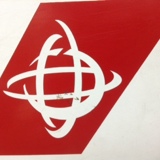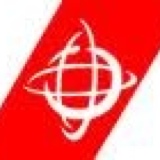Information
-
Gate / Carrier / Fueler
-
Station
-
Audit/Observation Date and Time
-
Auditor
-
Fueling Unit Number
PRE-OPERATING (MOTORIZED EQUIPMENT)
-
Are all tires in good/serviceable condition?
-
Are lift deck "whip switches" present and working to prevent the lift from being raised into the plane?
-
Is the meter calibration current and seals in tact?
-
Are all Fire Extinguishers current and inspected for the month?
-
Are the Interlock & interlock override in cab clearly labeled?
-
Is the interlock override switch sealed?
-
Operational check of interlock system
EQUIPMENT ARRIVAL
-
Equipment clean / presentable and labeled properly
-
Vehicle driven safely / proper speeds
-
Completed 50 & 10 foot safety stops
-
Aircraft chocked before approaching with vehicle
-
Block-out procedure used if area is too congested
-
Guideperson used if tight area, backing, or obscured
-
Safe approach to "Circle/Diamond of Safety"
-
Equipment never closer than 6 feet from A/C
-
If they are not the 1st to use a mobile unit, did they indicate they checked interlocks, brakes & lights in the ticket log sheet, right after the previous Fuelers last entry?
PRE-FUELING PROCESS
-
Vehicle chocked on passenger side / door closed
-
A/C Reg. number Confirmed by Fueler before servicing
-
Bonded in proper order and to proper location on AC
-
Followed proper connection/manual handling procedures
-
Safety cone or flag used on hydrant coupling pit
-
Is pit dust cap laying on the deck during fueling, or hanging down inside the pit
-
Properly positioned ladder / lift deck
-
Panel Flag used
-
Vehicle inspection form completed & displayed in unit
FUELING PROCESS
-
Fueler Monitored panel, vents, and gauges
-
Stopped fueling if motorized GSE parked under vent
-
Hydrant pit checked free of liquid and rubbish
-
Checked and documented Nozzle & Diff. Pressure & GPM
-
Correct fuel distribution + calculated fuel add performed
-
No leaks observed from any fueling equipment
-
Properly handled deadman, including "Set Down/Disconnect"
POST-FUELING PROCESS
-
Followed proper disconnect/manual handling procedures
-
Returned fuel hoses, deadman & bonding clamp w/out dragging
-
Aircraft fuel cap returned, valves closed and panel closed correctly
-
Returned equipment, dust caps, pit valve dust covers, and pit lids
-
Paperwork completed, distributed and logged
-
Operator stayed with equipment while connected to aircraft
EQUIPMENT DEPARTURE
-
Completed pre-departure walk around (all the way around vehicle)
-
Guideperson used if tight area, backing, or obscured
-
Zero 'FOD' produced or allowed to remain in fueling area/vehicle
-
All action observed were safe (if "No" marked explain in comment)
-
AFTER FUELING CHECKLIST properly completed
AGENT SAFETY & APPEARANCE
-
Wearing hearing protection
-
Wearing gloves when handling hoses and equipment
-
Uniform correct and presentable
-
Lifting technique (back straight, bend knees, don't jerk)
-
Climbing ladders & in/out trucks (all handrails, proper direction )
-
Hydrant pit connection (cautious with lid, down on one knee)
-
Safety Vest worn
Questions For Fueler
-
Do they know where is the EFSO for this gate?
-
Do they know where all the EFSOs are located on this fueling unit?
-
Can they identify at least 3 things to do if their unit will not pump
-
Do they know the departure time of the flight they are servicing?
-
Do they know "why" it is important to bond?
-
Can they demonstrate the proper way to check interlocks?
-
Can they identify three things to do in the case of a fuel spill?
-
Do they know where to find the fuel manual?
COMMENTS
-
Additional Comments
-
Photos
Findings and Corrective Actions
-
Enter a Finding or Observation
-
Finding or Observation
-
Corrective Action Taken
-
Severity
-
Follow Up Required
ACKNOWLEDGEMENTS
-
Auditor / Supervisor
-
Fueler












